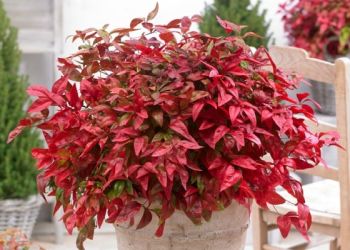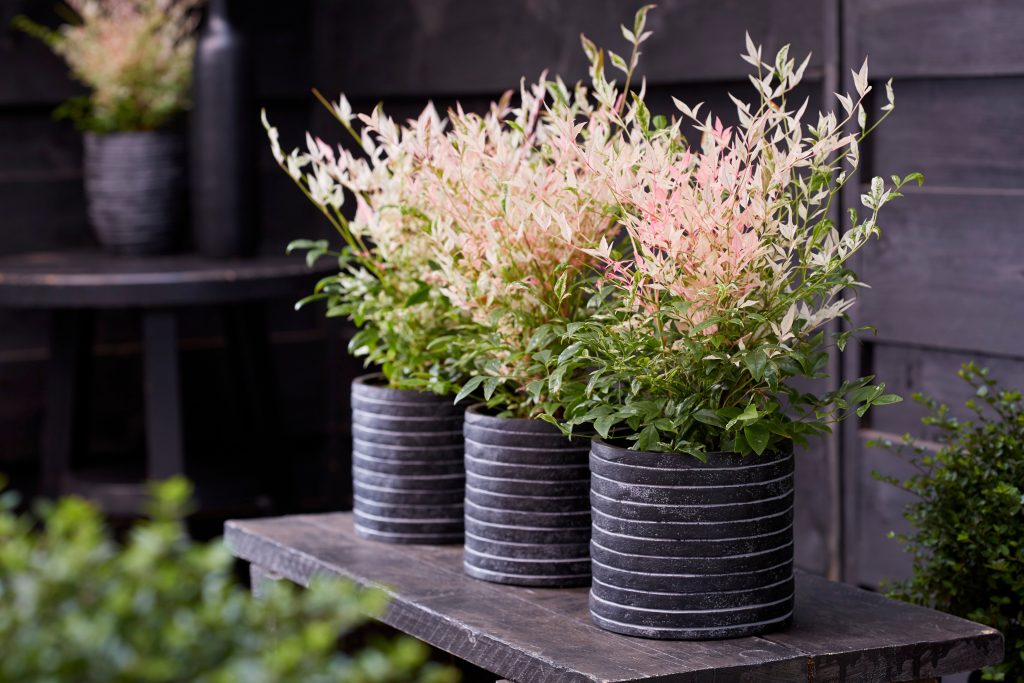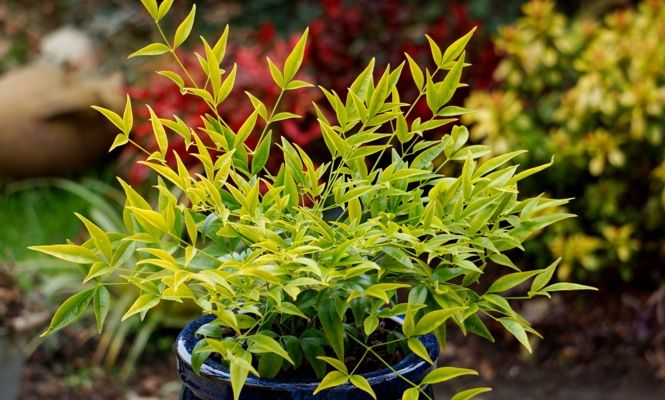13 Nov Nandina the fabulous ornamental shrub with flaming colours

Nandina is an elegant shrub with dark green pointy leaves. In the autumn bright red berries appear amongst these leaves. How autumnal can you get?
As a plant, Nandina offers you a varied display in the second half of the year. First there are white panicles of flowers. Then comes a fabulous autumnal crimson colour change, complete with bright red berries. And as the icing on the cake, this beauty retains a full crimson appearance through the winter, partly thanks to the elliptical leaves which are usually in pairs along the stems. Nandina is also known as heavenly bamboo. This is slightly misleading, since Nandina is not related to bamboo, although the plant is certainly heavenly. In China Nandina was often planted beside temples, a fact which was reflected in the name when the plant made its way to Europe.
The size is determined by the planting

When planted in the ground, Nandina can reach a height of two metres, but in a pot the plant will remain considerably smaller. It is available in high and low varieties. In both cases, make sure it has a substantial pot. Not only does Nandina have an extensive root system which requires space, but in a robust pot it is also more resistant to becoming top-heavy in stormy weather. This berry-bearing shrub is generally hardy. However, if temperatures drop far below freezing, it’s best to move Nandina to a greenhouse, shed or conservatory. It might therefore be useful to make the plant easily movable, for example in a rough wood container on castors.
Give Nandina space
To display Nandina’s spectacle at its best, you should ideally let the plant shine on its own, e.g. in a position in a flower bed where it has room or in a beautiful pot without any direct competition. Thanks to its loose shape, Nandina works very well in a garden where nature is left to do it’s own thing. The plant also works very well in a garden or on a balcony with Eastern elements.
Nandina care

- Nandina likes a light spot, but can also tolerate partial shade
- Water regularly, particularly on hot days. Less watering is required in the winter.
- Feed Nandina from time to time if it’s in a pot.
- If the plant gets too big, it can be cut back in the spring.


